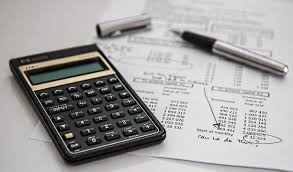How to Pay Less Taxes
The idea of tax planning is to arrange your financial affairs so you ultimately end up owing as little in taxes as possible. You can do this in three basic ways: You can reduce your income, increase your deductions, and take advantage of tax credits.
How to Reduce Taxable Income
Your adjusted gross income (AGI) is the key element in determining your taxes. It’s the starting number for calculations, and your tax rate and various tax credits depend upon it. You won’t be able to qualify for certain tax credits if it’s too high. The more money you make, the higher your AGI will be and the more you’ll pay in taxes. Conversely, you’ll pay less in taxes if you earn less.That’s the way the American tax system is set up. And it all begins with that magic number—your AGI.

Feed the IRA, lower your taxes
One reason that financial advisers consistently recommend contributions to a retirement plan as the best way to reduce a tax bill is that most of those contributions—depending on the type of plan—are essentially tax write-offs that don’t require itemization.
Because the money you contribute to a traditional IRA is a pre-tax contribution, it lowers your total taxable income. This means you will owe less in income taxes, regardless of whether you itemize or take the standard deduction. And because in recent years contributions made until the tax deadline have been applied to the return for the previous year, they have been popular among people who scramble to soften the blow of a large tax bill.

Invest in Municipal Bonds
Buying a municipal bond essentially means lending money to a state or local entity for a set number of interest payments over a predetermined period. Once the bond reaches its maturity date, the full amount of the original investment is repaid to the buyer.
Municipal bonds are exempt from federal taxes, and may be tax exempt at the state and local level as well, depending on where you live. Tax-free interest payments are what make municipal bonds attractive to investors.
Municipal bonds historically have lower default rates than their corporate bond counterparts (for investment grade securities, the default rate is 0.1% for municipal bonds versus 2.28% for corporate).However, municipals typically pay lower interest rates. Because of the tax benefits, bondholders must understand their tax equivalent yield. The higher your tax bracket, the higher your tax equivalent yield.

Deduct Half Your Self-Employment Taxes
The government assesses a 15.3% Federal Insurance Contributions Act tax on all earnings to pay for the Social Security and Medicare programs.
While employers split the cost with their workers, self-employed individuals are responsible for paying the entire amount themselves. To compensate for the extra expense, the government will let you deduct 50% of the amount paid from your income taxes. You don’t even need to itemize to claim this tax deduction.
Itemize State Sales Tax
Taxpayers who itemize their deductions can include either their state income tax or state sales tax on their Schedule A form. The state sales tax break is a great option if you live in a state without income taxes.While taxpayers can use a table provided by the IRS to easily claim their sales tax deduction, remember to add on the sales tax from any major purchase such as a car or boat.
The federal tax deduction for state and local taxes is capped at $10,000 from all sources.
Make a charitable donation
Making donations to charity is tax-free. Either yourself or the charity can claim the tax back through Gift Aid. If you pay higher or additional-rate tax, you can also claim back the difference to the basic-rate on any Gift Aid donations. To do this, you need to claim on your self-assessment tax return or ask HMRC to adjust your tax code. As a basic rate taxpayer, a £1.25 donation will cost you a pound. For higher rate taxpayers, you’ll pay just 75p. Keep records showing the date and amount you have donated.
Maximise your personal savings allowance
In 2020-21, you can earn £1,000 of interest on savings tax-free if you’re a basic-rate taxpayer. If you’re a higher-rate taxpayer, your tax-free allowance is £500. You’ll only pay tax on savings income that exceeds this threshold. This will no longer be deducted automatically by the savings provider. If tax is due, you’ll need to pay it via self-assessment or have it deducted via PAYE. Keep in mind that you won’t have a savings allowance as an additional-rate (45%) taxpayer.
